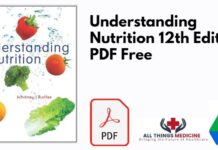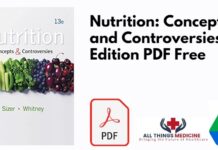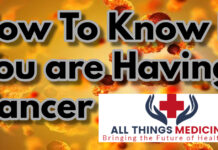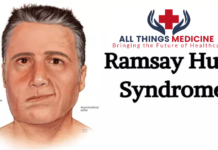Page Contents
There are certain illnesses that medical professionals deal with on a daily basis. Most of them are infectious and some are non-infectious. This article contains a list of those common pathologies and their treatment.
List of common pathologies and their treatment
- Common cold
- Influenza (flu)
- Pharyngitis (sore throat)
- Headache
- Allergic rhinitis (hay fever)
- Conjunctivitis (pink eye)
- Gastroenteritis (stomach flu)
- Vaginal candidiasis (vaginal yeast infection)
- Cystitis (urinary tract infection)
- Gastro-esophageal reflux disorder (GERD)
Common cold

Common cold is an upper respiratory tract infection mostly caused by rhinovirus which affects your nose and throat. As the name suggests, they are extremely common. The symptoms of common cold are:
- Runny nose
- Nasal congestion
- Sneezing
- Sore throat
- Cough
Fever is not very common but sometimes can occur and is usually mild.
Treatment
Common cold does not have a specific treatment for cure. It usually clears up on its own in 7 to 10 days. There are certain measures that you can take to help ease your symptoms.
- Use a nasal decongestant for a stuffy nose for example pseudoephedrine)
- Antihistamines can help with sneezing, runny nose and watery eyes.
- Stay hydrated. Drink plenty of water and fluids.
- Take rest and reduce your physical activity.
- Eat a healthy diet rich in vegetables and fruits which can help boost your immunity and fight off the infection.
Since common cold is not caused by bacteria, antibiotics should not be taken unless prescribed by a doctor.
Influenza (flu)
Influenza, more commonly known as flu, is a viral infection affecting the respiratory system. It affects the nose, throat and sometimes the lungs as well. It is caused by Influenza A or B virus. Many people confuse the common cold with flu since they have some common symptoms but they are different. Flu presents with more severe symptoms which can include:
- Fever
- Sore throat
- Body and muscle ache
- Fatigue
- Dry cough
- Headache
- Runny or stuffy nose
Treatment
There is a vaccine for flu that everybody should get every year since it is a highly contagious infection. The treatment for influenza is almost the same as the common cold (listed above). However, if the infection is too severe then the doctor may prescribe an antiviral medication to help fight off the infection. The antiviral drugs come in different formulations such as oral, intravenous or inhaled.
Since the symptoms of flu can be more severe than the common cold, here are a few things that you can do to relieve your symptoms:
- Tylenol or ibuprofen for pain and fever.
- Lozenges for the sore throat.
- Salt water gargles also help soothe the sore throat.
Pharyngitis (sore throat)

Pharyngitis is an inflammation of the pharynx. Pharynx, also known as the throat, is located at the back of the oral and nasal cavity, and extends to the top of the trachea and esophagus. The inflammation leads to pain, scratchiness, and irritation in the throat. It is most often caused by viruses but can also occur as a result of an infection by bacteria. Pharyngitis can occur as a result of common cold or flu. Bacterial pharyngitis is usually caused by group A streptococcus, also known as ‘strep throat’.
If it is caused by the common cold or flu, then the symptoms are the same as listed above for these conditions. Other symptoms of pharyngitis can include:
- Scratchy throat
- Pain in the throat
- Difficulty swallowing
- Hoarse voice
- Cough
- Fever and chills
Symptoms of strep throat can include:
- Painful swallowing
- Swollen lymph nodes in the neck
- Swollen, inflamed tonsils
- White or gray patches in the throat
- Redness in the throat
Treatment
Treatment depends upon the cause of pharyngitis. Mild viral infections do not require antibiotics. They can be managed by resting, staying hydrated, taking over-the-counter painkillers such as ibuprofen or tylenol, lozenges and gargling with salt water. If your doctor suspects strep throat, then he might take a swab from your throat to confirm the diagnosis. In case of strep throat, antibiotics are prescribed.
If your symptoms start to get better after taking antibiotics, do not stop taking them. Complete the course as prescribed by the doctor.
Headache

Headache is another very common condition experienced by almost everyone. It is pain in the head and neck region which can be throbbing, sharp or dull in nature. There are a number of different types of headaches based on the etiology. A broad classification of headaches is primary and secondary headaches.
Primary headaches include migraine, tension and cluster headaches while secondary headaches occur as a result of an underlying cause such as a stroke, hemorrhage, head injury, tumor, brain abscess etc.
Treatment
Treatment of headaches depends on the underlying cause or the trigger. Over-the-counter painkillers work well for treating headaches but they should not be taken for too long as they can cause overuse headaches. Migraines that do not respond to over-the-counter painkillers are treated with triptans prescribed by the doctor.
In case of secondary headaches, proper diagnosis is required after which treating the underlying cause will make the headaches go away.
Prevention of headaches includes identifying your triggers and avoiding them for example if stress is triggering your headaches then practice stress-relieving or breathing exercises.
Allergic rhinitis (hay fever)
Allergic rhinitis, also known as hay fever, is an allergic response to an allergen. It results in sneezing and other allergic symptoms. Allergens are harmless but they can trigger an immune response in people who are allergic to them. Common allergens include mold, dust, animal dander, pollen and others.
The symptoms of allergic rhinitis include:
- Sneezing
- Itchy, watery and stuffy nose
- Itchy and watery eyes
- Dark circles under eyes
- Feeling tired
- Headache
- Cough
- Irritated or scratchy throat
Treatment
Treatment of allergic rhinitis includes the following:
- Over-the-counter antihistamines such as cetirizine, levocetirizine, fexofenadine, loratadine etc.
- Nasal decongestants such as pseudoephedrine but these should not be used for more than 3 days.
- Nasal corticosteroid sprays which help reduce inflammation of the nasal membranes.
- Eye drops for watery and itchy eyes.
- Allergy shots or sublingual tablets in case of severe allergic rhinitis which is not controlled by medications alone.
Conjunctivitis (pink eye)
Conjunctivitis, or pink eye, is the inflammation or infection of the conjunctiva. Conjunctiva is a transparent layer that covers part of your eyeball (the white part) and the inner side of your eyelids. It can be caused by viruses, bacteria or allergies. It is a highly contagious condition. Symptoms include:
- Redness in the eye (one or both)
- Itching in the eye
- Watery eye
- Burning sensation in the eye
- Discharge from the eye
- Difficulty opening eyes in the morning. It happens due to the discharge crusting over on the eyelids overnight.
- Foreign body sensation (gritty sensation in the eye)
- Blurred vision
Treatment
- Viral conjunctivitis does not have a specific treatment. It usually runs its course and clears up on its own. A severe viral conjunctivitis such as that caused by herpes simplex virus will require prescription antiviral drugs.
- Bacterial conjunctivitis requires prescription antibiotics which can either be in the form of pills, eye drops, ointment or all of them.
- Antihistamines are used to relieve symptoms of allergic conjunctivitis.
- You can use warm compresses on the eye to relieve the pain and to clean the dried up discharge as well.
- Do not rub your eyes and do not wear contact lenses until the infection clears up.
Gastroenteritis (stomach flu)

Gastroenteritis, also known as stomach flu, refers to the inflammation and infection of the gastrointestinal tract. It can be caused by certain viruses, bacteria and their toxins, or parasites. Viruses such as the rotavirus or norovirus are the most common culprits. It is spread through direct contact with an infected person or sharing utensils with that person. It is also spread through eating or drinking contaminated food or water. The main symptom of gastroenteritis is loose, watery diarrhea. Other symptoms include:
- Fever and chills
- Nausea and vomiting
- Body aches
- Abdominal cramps
Treatment
Viral gastroenteritis usually clears up on its own. Mild cases of bacterial gastroenteritis also clear up on their own however severe cases require treatment with antibiotics. The most important thing to do is to keep yourself hydrated. Vomiting and diarrhea can lead to dehydration. Severe cases of dehydration need to be hospitalized for intravenous fluids and electrolytes.
So, in order to prevent dehydration, it is important to drink plenty of water and clear fluids. The patients should also take oral rehydration solution (ORS) to prevent electrolyte imbalance.
Vaginal candidiasis (vaginal yeast infection)
It is a very common condition among women. According to research, 3 out 4 women have experienced a yeast infection at least once in their lives. This infection occurs due to overgrowth of a type of yeast, candida, which otherwise lives in controlled numbers in the vulva and vagina. The imbalance between the ‘good bacteria’ and the yeast leads to its overgrowth. It can occur due to a number of causes such as use of antibiotics, pregnancy, uncontrolled diabetes and stress. Symptoms include:
- Redness around the vulva and vagina
- Swelling around the vulva and vagina
- Irritation
- Itchiness
- Burning sensation
- Thick, white vaginal discharge (similar to cottage cheese in appearance)
Treatment
Vaginal candidiasis is treated using antifungals. The doctor can prescribe an antifungal medication in the form of pills, suppositories and ointments. Some antifungal ointments also contain a mild topical steroid to help relieve itching.
Cystitis (urinary tract infection)
Cystitis refers to the infection and inflammation of the bladder. It can occur in both men and women but is more common among women. Bacteria such as E.coli is the most common culprit. It can occur as a result of poor hygiene, certain drugs, hygiene products etc.
Symptoms include:
- Burning sensation while urinating
- Frequent urge to urinate
- Pelvic pain
- Strong-smelling or cloudy urine
- Low-grade fever
- Blood in the urine
Treatment
Mild cases of cystitis can resolve on their own. Some cases of bacterial cystitis require prescribed antibiotics. The patient should drink plenty of water and clear fluids. Cranberry juice and tablets are also helpful. Over-the-counter painkillers such as ibuprofen or acetaminophen can be taken to relieve pain.
Gastro-esophageal reflux disorder (GERD)
GERD is a condition that occurs when there is backflow of stomach acid and juices into the esophagus, irritating its lining. There is a band of circular muscle, lower esophageal sphincter (LES), at the bottom end of your esophagus that relaxes and contracts. It allows for the passage of food by relaxing and then closes back up. If it is weak or if it relaxes abnormally, acid can flow into the esophagus. Symptoms include:
- Burning sensation in the chest (heartburn) that gets worse by lying down
- Heartburn usually after eating
- Trouble swallowing
- Feeling of a lump in the throat
- Bad breath
- Regurgitation of food or acid in mouth
- Trouble sleeping
- Laryngitis
- Chronic cough
- Chest pain
Difficulty sleeping, laryngitis and chronic cough are usually seen in night time acid reflux.
Treatment
The treatment of GERD includes certain lifestyle changes, medications and surgery in severe cases.
- Antacids can provide temporary relief from heartburn by neutralizing the stomach acids. However overuse of antacids can lead to adverse effects such as diarrhea so consult your doctor first.
- H-2 receptor blockers such as cimetidine and famotidine can help reduce the secretion of acid in the stomach. They are long acting as compared to antacids and can be used to treat chronic acid reflux.
- Proton pump inhibitors (PPIs) can also be used to reduce the amount of acid in the stomach. These include omeprazole, pantoprazole, esomeprazole and others.
Lifestyle modifications for treating GERD include:
- Elevate your head while sleeping to prevent acid from flowing back into the esophagus.
- Do not eat heavy meals at night.
- Eat 2 to 3 hours before your bedtime.
- Avoid smoking as cigarette smoke can weaken the lower esophageal sphincter.
- Maintain a healthy weight.
- Eat smaller portions and eat slowly.
- Chew your food thoroughly, take your time with it.
- Wear loose clothing and avoid tight fitting clothes, especially the ones that are tight around your waist and may apply pressure in that area.
- Do not lie down after eating.
There are certain surgical procedures as well for patients whose symptoms are not responding to medication alone or if they opt for surgery themselves due to any other reason.
Recommended Articles
Diabetes: Types, Symptoms, Treatment, And More
Monkeypox Outbreak 2022: Symptoms, Treatment, Prevention And More













